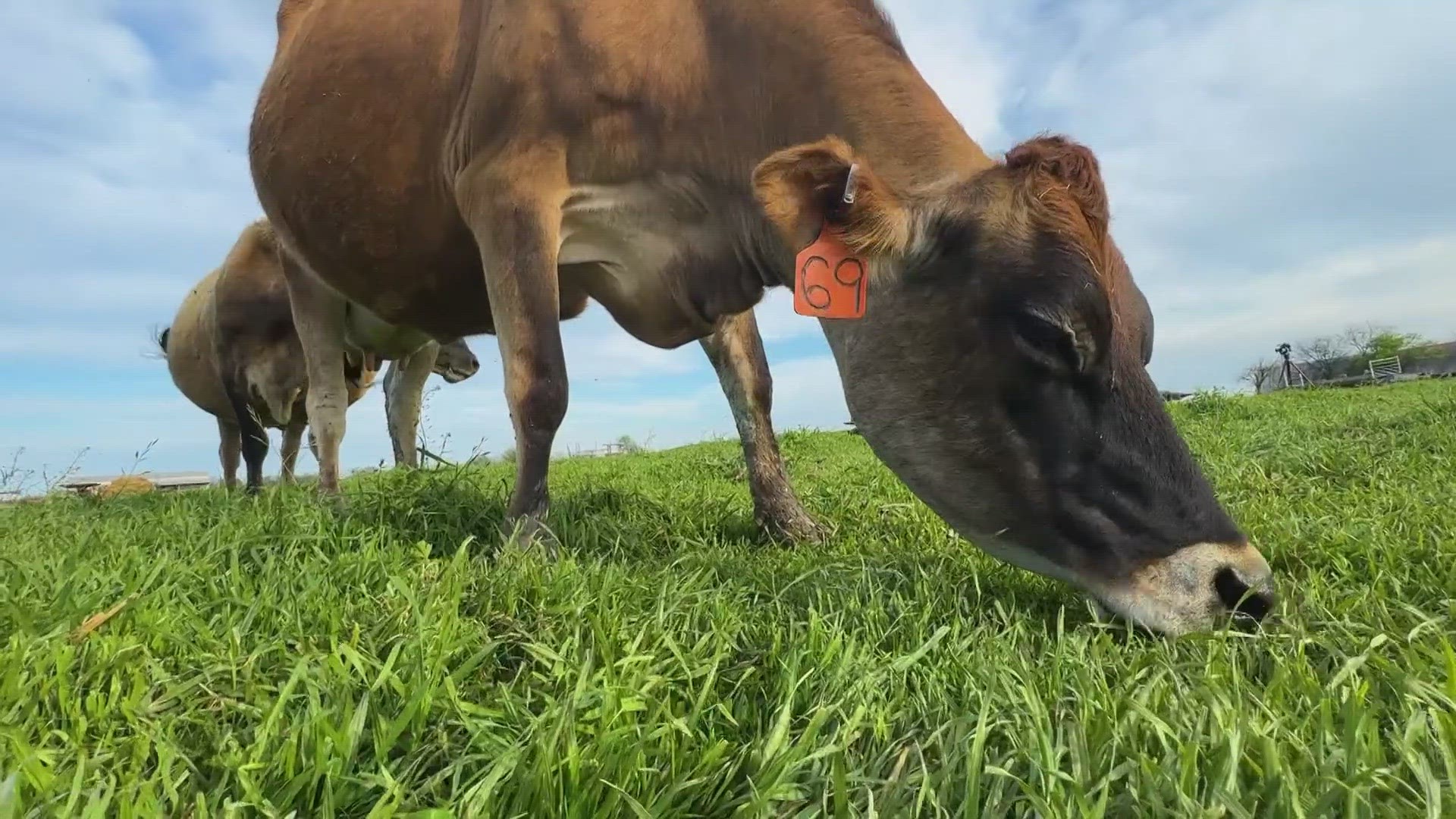TEXAS, USA — Following the devastation of the largest recorded wildfire in Texas history, farmers in the Panhandle, also known as Cattle Country, are dealing with another blow.
Cows at two different dairy farms in Texas and two farms in Kansas have tested positive for Highly Pathogenic Avian Influenza, commonly known as the bird flu.
Researchers say the outbreak is believed to be the first time the disease has been found in livestock.
On Monday, the U.S. Dept. of Agriculture confirmed strains of the bird flu. The USDA, Texas Dept. of Agriculture (TDA), the Texas Animal Health Commission (TAHC) are working together to closely monitor the situation, TDA Commissioner Sid Miller in a statement.
“Understanding the details surrounding the transfer of avian virus to livestock is the top priority of animal health professionals and agriculture agencies,” Miller said. “While troubling, this outbreak is not currently expected to threaten our nation’s commercial dairy supply.”
According to Miller, around 10% of the total herd on the impacted farms have symptoms. The infected cows have low milk production, and milk from sick cows must be collected separately and is not allowed to enter the food supply chain, the TDA said.
Affected dairy cows are segregated, a common health protocol with any animal health concern.
Gary Joiner, Director of Communications for the Texas Farm Bureau said there’s an enhanced level of biosecurity in the Panhandle region to run tests and get to the bottom of the outbreak. When milk is processed, viruses like avian influenza are killed, Joiner said.
“The confidence level should be very high for consumers that milk products are safe,” Joiner said. “Farmers are limiting people that are coming onto their property other than staff, making sure buckets and feed that could be accessible to wild birds are clean and making sure animals are not coming in contact with wild birds.”
It’s still unclear how exactly cows became infected with the disease from wild birds, but so far, there’s no evidence that the disease is transmitted from cow to cow, Joiner said.
“Dairy farmers right now are helping veterinarians and state and national health officials get as many samples as they need to continue to study this situation to answer those questions,” Joiner said.
Infected cattle recover in 10-14 days, Joiner said.
Danny Wolf, owner of Spring Creek Farms in Gainesville told WFAA he’s watching the situation closely, but isn’t concerned his dairy cows are at risk.
“Everybody’s pretty healthy,” Wolf, a third-generation farmer said. “At this point, I feel like it’s pretty safe, but I am taking precautions on who I allow to enter and exit the farm just as a precaution.”
Dairy farmers and veterinarians are encouraged to report cattle illnesses to the USDA, State Animal Health Commission or the Texas A&M lab.
The National Veterinary Services Laboratories conducted initial testing, which showed the current risk to the public is low.

